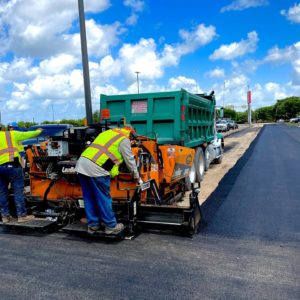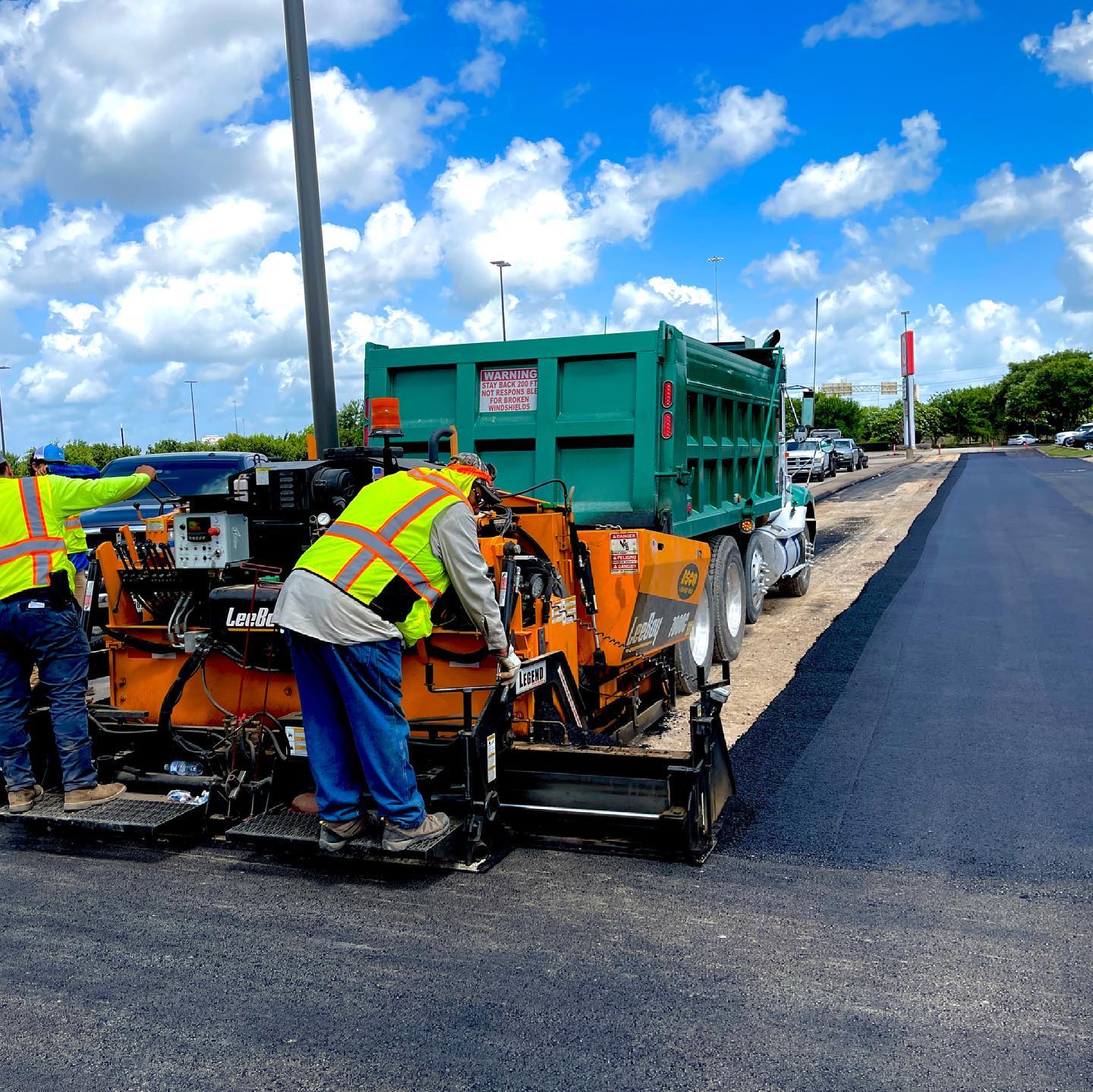
What Is a Full-Depth Asphalt Patch?
Asphalt and paving contractors can use a variety of materials and methods to patch asphalt pavements. For example, there are skin patches that can be applied in cold weather to make a temporary repair. Another method that asphalt companies in Houston often use is partial-depth asphalt patching. When performing a partial-depth patch on asphalt paving Houston contractors usually remove the top one or two layers of the existing pavement before installing a patch. With full-depth asphalt patching, all pavement layers are removed to give the contractor access to the foundation. If the foundation needs to be repaired or upgraded, the work is performed before new asphalt is placed and compacted.
What Issues Might a Full-Depth Asphalt Repair Resolve?
Asphalt companies in Houston commonly use full-depth asphalt patching to repair potholes, alligator cracking, extremely deep or wide cracks, localized base erosion, or areas with certain types of distress. Asphalt paving contractors can also use the full-depth patching method to strengthen the foundation and the pavement in areas that suffer repetitive damage from heavyweight vehicles.
How Long Will a Full-Depth Asphalt Repair Last?
In most cases, a full-depth patch is considered a permanent repair, so it could easily last as long as or longer than the pavement surrounding it. However, like the rest of your pavement, your patch should receive professional asphalt maintenance, including sealcoating and crack repairs.
How Do Asphalt Companies in Houston Install a Full-Depth Patch?
The extent of the damage and the condition of the surrounding pavement can affect the actions that your asphalt and paving contractor may take. However, the basic steps are as follows.
1. Mark off a rectangle or square of pavement that is slightly larger than the damaged area.
2. Remove the rectangle or square of pavement. Typically, this involves sawing out the pavement or using a jackhammer to break it up, but an asphalt milling machine may also be used in some situations.
3. Any needed foundation work is completed.
4. Fresh asphalt is inserted into the void and onto a few inches of the surrounding pavement, and each layer of asphalt is thoroughly compacted.
5. Some asphalt paving contractors seal the edges of the patch to maximize the protection against water infiltration.
If you have additional questions about asphalt maintenance, paving, or repairs, ask the experts at Marathon Solutions Group. We offer a full range of paving services, including asphalt patching and asphalt paving, asphalt milling, parking lot striping, concrete installation, asphalt resurfacing, parking lot signage, thermoplastic markings, concrete repair, asphalt sealcoating, and bollard installations. We have built an exemplary reputation for outstanding customer service and exceptional craftsmanship. If you would like for us to create a free quote for you, there are three ways to submit your request. You can reach us by phone at 800-879-1147, email us at HQ@Marathon-Solutions.com, or submit our online form.


